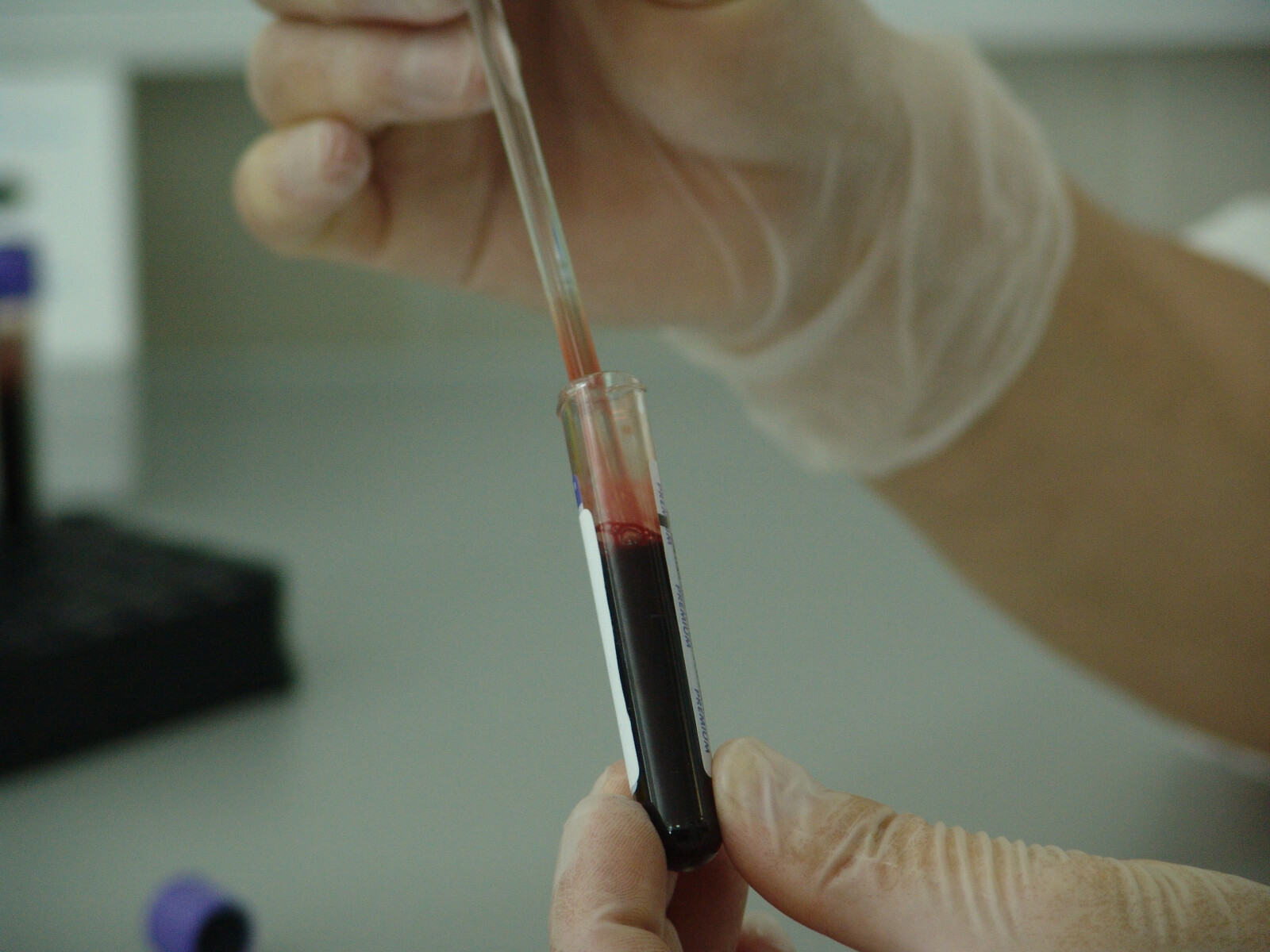Breakthroughs in Ovarian Cancer Treatment and Prevention
This article explores the latest advancements in ovarian cancer treatment and prevention, focusing on innovative surgical approaches, chemotherapy, and targeted therapy. It delves into the critical role of regular screenings, genetic counseling, and clinical trials in combatting late-stage diagnosis. This piece serves as a comprehensive guide for healthcare professionals, patients, caregivers, and those seeking a deeper understanding of ovarian cancer's complexities, offering insights into future developments in the field.

Key Takeaways
- Treatment options for ovarian, fallopian tube, and primary peritoneal cancer include surgery, chemotherapy, targeted therapy, and in some cases, radiation therapy.
- Clinical trials offer opportunities for innovative treatments and advancements in prevention and screening methods for ovarian cancer.
- Preventive measures, such as genetic counseling and testing, as well as regular screenings, can help reduce the risk of developing ovarian cancer.
- Clinical advances, research findings, and NCI programs are contributing to progress in preventing and treating ovarian cancer.
Understanding Ovarian Cancer: An Overview
Before we delve into the breakthroughs in ovarian cancer treatment and prevention, it's crucial to first break down the fundamentals of ovarian cancer, its types, and the challenges it presents. Being often diagnosed at an advanced stage, the challenges of diagnosis are significant. These include detecting the disease early and distinguishing it from other conditions with similar symptoms. Survivorship is another key aspect, which encompasses living with, through, and beyond cancer. It involves long-term follow-ups, management of disease-related symptoms, and health maintenance. Support, an indispensable part of the cancer journey, includes emotional, psychological, and practical help. It aids in coping with the disease, adjusting to life during and after treatment, and ensuring caregivers also receive necessary support.
The Challenges of Living With Ovarian Cancer
Living with ovarian cancer presents not only physical challenges, such as managing symptoms and treatment side effects, but also psychological hurdles like coping with emotional distress. The journey often necessitates extensive cancer support, including medical and emotional care. The importance of caregiver resources cannot be overstated; these provide essential assistance and relief to those tasked with the care of cancer patients. The emotional toll of the disease often leads to anxiety, depression, and fear, which can be as debilitating as the physical symptoms. Moreover, the side effects of treatment often compound these issues, leading to a cycle of physical and emotional pain. Navigating these challenges is a significant part of the ovarian cancer journey, requiring strength, resilience, and an extensive support system.
Navigating The Statistics of Ovarian Cancer
Approximately 22,000 women in the United States are diagnosed with ovarian cancer each year, underscoring the importance of understanding and navigating the statistics of this disease. These figures can seem daunting, but understanding statistics can help demystify this disease, aiding patients, and healthcare professionals in decision-making. Breakthrough research has contributed to improving survival rates. Yet, the five-year survival rate for ovarian cancer is still only 47.6%, emphasizing the urgency for continued investigation and advancement in treatment options. In interpreting these statistics, it is essential to remember that they represent aggregate data and not individual prognosis. Each patient's case is unique, influenced by factors such as age, overall health, and the cancer's stage and grade.
Available Treatment Methods for Ovarian Cancer
While ovarian cancer is often diagnosed at an advanced stage, there are several treatment methods available that offer hope for improved survival and quality of life. Surgery and chemotherapy have been the traditional mainstays of treatment. However, in recent years, there has been a shift towards exploring targeted therapies. These therapies aim to specifically target cancer cells, reducing damage to healthy cells and potentially improving treatment outcomes. Additionally, potential immunotherapies are being investigated. These use the body's own immune system to fight the cancer. Clinical trials are ongoing to determine the efficacy of these novel treatment methods. These advancements in treatment offer hope for those diagnosed with this often challenging disease.
Innovative Approaches in Ovarian Cancer Treatment
In the dynamic landscape of oncology, new and innovative approaches are continually being developed and researched to enhance the treatment of ovarian cancer. One such breakthrough is the advancement in immunotherapy, which utilizes the body's immune system to fight cancer cells. This method has shown promising results, particularly in patients with advanced or recurrent ovarian cancer. Another innovative approach is the development of novel targeted therapies. These treatments work by disrupting specific molecules involved in cancer growth and spread. They offer a more customized treatment option, targeting the cancerous cells while sparing healthy ones. Both immunotherapy advancements and novel targeted therapies represent significant strides in the quest for more effective and less toxic treatments for ovarian cancer.
Monitoring and Early Detection: The Role of Regular Screenings
Regular screenings play a critical role in the early detection of ovarian cancer, and when coupled with consistent monitoring, they significantly increase the chances of successful treatment. The regular screening benefits are manifold, including timely detection, identification of cancer at a treatable stage, and enabling personalized treatment plans. Advancements in early detection techniques are revolutionizing the field, contributing to better survival rates and improved patient health outcomes. Innovations in medical technology, such as improved imaging and genetic testing, are enhancing the precision and effectiveness of these screenings. As ovarian cancer often presents no symptoms until it has progressed, regular screenings are pivotal in the fight against this silent killer, underscoring the importance of this proactive approach.
Advances in Ovarian Cancer Prevention Strategies
Harnessing the power of scientific research and innovation, researchers are developing promising strategies for ovarian cancer prevention, and these advances are bringing new hope to the fight against this deadly disease. These advances in prevention methods are rooted in a better understanding of the disease's genetic basis and risk factors. The latest research in prevention strategies involves the use of prophylactic surgeries, genetic testing and counseling, and the administration of oral contraceptives as potential prevention methods. Furthermore, lifestyle modifications such as maintaining a healthy weight, regular exercise, and a balanced diet are being reinforced as essential preventive measures. Though many of these strategies are still in the research and testing stages, they represent a significant leap forward in the proactive fight against ovarian cancer.
The Role of Genetics in Ovarian Cancer Risk and Prevention
Understanding the genetic factors contributing to ovarian cancer risk has become a pivotal aspect of prevention strategies and treatment plans. Genetic testing implications are significant, as they can guide medical interventions and help individuals understand their risk. Certain genetic mutations, like BRCA1 and BRCA2, substantially increase the likelihood of developing the disease. However, genetics is not the sole determinant of ovarian cancer risk. The role of lifestyle factors, such as diet and exercise, cannot be undermined. A combination of genetic predisposition and lifestyle choices shape the overall risk. Therefore, a comprehensive approach, incorporating both genetic testing and lifestyle modifications, is essential to effectively manage the risk and prevention of ovarian cancer.
The Impact of Clinical Trials on Ovarian Cancer Research
Undeniably, clinical trials have played a monumental role in propelling ovarian cancer research forward, leading to significant advancements in treatment and prevention strategies. These trials have paved the way for exploring the role of immunotherapy in ovarian cancer treatment, offering a novel approach to engage the patient's own immune system in fighting the disease. Furthermore, they have shed light on the role of targeted therapies in ovarian cancer prevention. By focusing on specific molecular targets associated with cancer, these therapies can potentially prevent the onset of the disease with fewer side effects. The continuous evolution and improvement of clinical trials are thus crucial to further enhancing our understanding and management of ovarian cancer.
Looking Forward: The Future of Ovarian Cancer Treatment and Prevention
The evolution of ovarian cancer treatment and prevention holds immense promise, with emerging advancements propelling us towards a future of improved patient outcomes and survival rates. Central to this progress is the concept of personalized medicine, which tailors treatment to individual patient profiles, increasing its efficacy and reducing side effects. Furthermore, emerging therapies, including targeted therapies and immunotherapies, are expanding our arsenal against ovarian cancer. These novel treatments, currently in various stages of research and clinical trials, aim to selectively attack cancer cells while sparing healthy ones. As we forge ahead, the marriage of personalized medicine and emerging therapies is expected to revolutionize the landscape of ovarian cancer treatment and prevention, offering a beacon of hope for those affected by this disease.
Frequently Asked Questions
What Is the Psychological Impact of an Ovarian Cancer Diagnosis and How Can It Be Managed?
The psychological impact of an ovarian cancer diagnosis can be profound, often leading to emotional distress and anxiety. It is crucial to foster emotional resilience, which can be bolstered through therapy, stress management techniques, and maintaining a positive outlook. Additionally, strong support networks, encompassing family, friends, and healthcare professionals, can provide essential emotional assistance. Regular communication with these networks can alleviate feelings of isolation and fear, contributing to psychological well-being.
How Do Lifestyle Factors, Like Diet and Exercise, Influence the Risk of Ovarian Cancer?
Lifestyle factors like diet and exercise significantly influence the risk of ovarian cancer. Dietary implications include maintaining a balanced diet rich in fruits, vegetables, and whole grains, which can potentially lower the risk. Regular exercise regimens can also reduce the risk by helping to maintain a healthy weight. However, the exact impact of these factors on ovarian cancer risk is still under scientific investigation, and individual risk can be influenced by various other genetic and environmental factors.
What Are the Potential Side Effects of the Different Treatment Options for Ovarian Cancer?
Potential side effects of ovarian cancer treatments vary widely depending on the specific treatment protocol. Chemotherapy may cause nausea, hair loss, and fatigue, while surgery presents risks such as infection and blood clots. Targeted therapies and radiation have their own side effects, often related to drug efficacy and treatment costs. It's essential for patients to discuss these potential side effects with their healthcare provider to make an informed decision about their treatment plan.
What New Technologies or Techniques Are Being Explored in the Realm of Ovarian Cancer Research?
In the realm of ovarian cancer research, significant advancements are being made. A prominent focus is on genetic testing advancements, which aid in early detection and personalized treatment plans. Additionally, immunotherapy approaches are being explored, leveraging the body's immune system to fight cancer cells. Both these cutting-edge technologies hold great promise in enhancing treatment outcomes and advancing our understanding of ovarian cancer.
How Do Ovarian Cancer Rates and Treatment Outcomes Vary Across Different Demographics?
Ovarian cancer rates and treatment outcomes vary significantly across different demographics. Genetic predispositions can play a substantial role, with certain ethnic groups demonstrating higher risk levels. Socioeconomic disparities also influence both the incidence and survival rates, with access to early detection and quality care often linked to income and education levels. Additionally, age and geographical location can impact the prevalence and prognosis of ovarian cancer.
Conclusion
In conclusion, the advancements in ovarian cancer treatment and prevention strategies signify hope for patients and caregivers. The development of surgical procedures, chemotherapy, targeted therapy, and possible radiation therapy offer diversified treatment options. Regular screenings, genetic counseling, and testing are crucial in early detection and prevention. Clinical trials continue to play a pivotal role in propelling research forward. Emphasis on comprehensive patient care and caregiver support underscore the holistic approach towards managing ovarian cancer.

This post has been generated by AI and was not reviewed by editors. This is Not legal advice. Please consult with an attorney.




